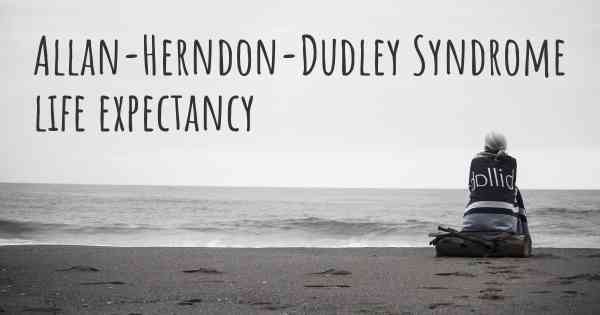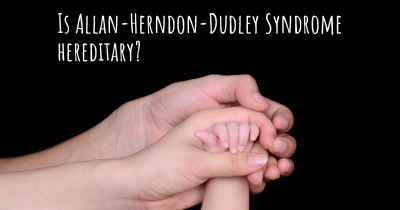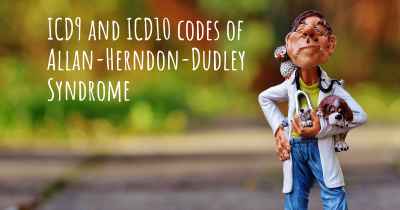What is the life expectancy of someone with Allan-Herndon-Dudley Syndrome?
Life expectancy of people with Allan-Herndon-Dudley Syndrome and recent progresses and researches in Allan-Herndon-Dudley Syndrome

Allan-Herndon-Dudley Syndrome (AHDS) is a rare genetic disorder that primarily affects males. It is caused by mutations in the SLC16A2 gene, which leads to impaired transport of thyroid hormones into cells. This results in severe intellectual disability and motor impairments. Unfortunately, individuals with AHDS often have a significantly reduced life expectancy. While there is considerable variability, the average life expectancy for individuals with AHDS is typically shortened. It is important for affected individuals and their families to work closely with healthcare professionals to manage symptoms and provide appropriate care and support throughout their lives.
Allan-Herndon-Dudley Syndrome (AHDS) is a rare genetic disorder that primarily affects the development and function of the brain. It is an X-linked recessive disorder, meaning it predominantly affects males. AHDS is caused by mutations in the SLC16A2 gene, which is responsible for producing a protein called monocarboxylate transporter 8 (MCT8). This protein plays a crucial role in transporting thyroid hormones into the brain.
Thyroid hormones are essential for the normal development and function of the brain, particularly during the early stages of life. In individuals with AHDS, the mutated SLC16A2 gene leads to a deficiency or dysfunction of the MCT8 protein, resulting in impaired transport of thyroid hormones into the brain. As a result, the brain does not receive adequate levels of thyroid hormones, leading to severe neurological impairments.
The symptoms of AHDS typically become apparent in infancy or early childhood. Affected individuals may experience severe intellectual disability, delayed or absent speech development, muscle weakness, abnormal muscle tone, and movement difficulties. They may also exhibit abnormalities in muscle coordination (ataxia), spasticity, and abnormal reflexes. The severity of symptoms can vary among individuals.
Unfortunately, the prognosis for individuals with Allan-Herndon-Dudley Syndrome is generally poor. The condition is associated with significant neurological impairments that severely impact the quality of life. Life expectancy can be significantly reduced in individuals with AHDS, with many affected individuals not surviving beyond their teenage years or early adulthood.
Due to the rarity of AHDS, limited data is available regarding the specific life expectancy of individuals with the syndrome. However, it is important to note that the severity of symptoms and the rate of disease progression can vary among affected individuals. Some individuals may have a milder form of the syndrome and may live into adulthood, while others may experience more severe symptoms and have a shorter life expectancy.
Management of Allan-Herndon-Dudley Syndrome primarily focuses on supportive care and addressing the specific symptoms and complications associated with the disorder. This may involve physical therapy, occupational therapy, speech therapy, and medications to manage spasticity or seizures. Early intervention and a multidisciplinary approach involving various healthcare professionals can help optimize the quality of life for individuals with AHDS.
In conclusion, Allan-Herndon-Dudley Syndrome is a rare genetic disorder that affects brain development and function due to mutations in the SLC16A2 gene. The syndrome is associated with severe neurological impairments and individuals affected by AHDS may experience a significantly reduced life expectancy. However, the prognosis can vary depending on the severity of symptoms and the individual's specific condition. Supportive care and early intervention can play a crucial role in improving the quality of life for individuals with AHDS.
Posted Mar 27, 2017 by Veronica 1300








